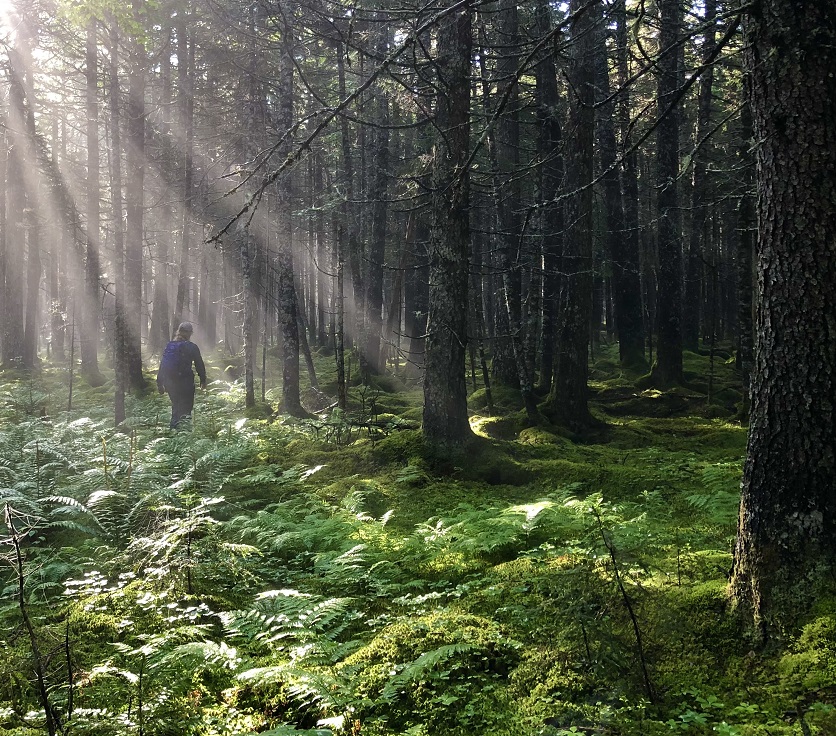Allow others the pleasure of discovery by leaving rocks, plants, archaeological artifacts and other objects of interest as you find them.
Campsites
 Leave areas as you found them. Do not dig trenches for tents or build lean-tos, tables, chairs or other rudimentary equipment. If you clear an area of surface rocks, twigs or pine cones replace them before leaving. For damaged sites, it is appropriate to clean up the site and dismantle inappropriate user-built facilities, such as many fire spots and seats or tables. Keep in mind: ”Good campsites are found and not made.”
Leave areas as you found them. Do not dig trenches for tents or build lean-tos, tables, chairs or other rudimentary equipment. If you clear an area of surface rocks, twigs or pine cones replace them before leaving. For damaged sites, it is appropriate to clean up the site and dismantle inappropriate user-built facilities, such as many fire spots and seats or tables. Keep in mind: ”Good campsites are found and not made.”
In many locations, properly located and legally constructed facilities, such as a single fire ring, should be left in place. Dismantling them will cause additional impact because they will be rebuilt with new rocks thereby impacting a new area. Learn to evaluate all the situations you encounter.
Trees and Plants
These are some of the practices that should be abandoned because they damage trees: tying tent guy lines to trunks, hammering nails into trees for hanging things, carving initials into trees or hacking at them with a hatchet or saw. Cutting boughs to use them as sleeping pads produces minimal benefit and maximum impact. It is better to use sleeping mats that are available in camping stores. Picking a few flowers does not seem like it would have any great impact and, if only a few flowers were picked, it wouldn’t. But, if every visitor thinks “I’ll just take a few,” the impact will be significant. Take a picture or sketch the flower instead of picking it. Experienced campers may enjoy an occasional edible plant, but they are careful not to deplete the surviving vegetation or disturb plants that are rare or are slow to reproduce. Ask the land manager about protected species for which gathering is regulated and controlled.
Natural Objects and Cultural Artifacts
 Natural objects of beauty or interest add to the mood of the backcountry. By leaving these objects where they are and in their original state, others can also enjoy them. In national parks and many other natural areas, it is illegal to remove plants, mushrooms, berries, animals, animal parts (particularly antlers), fossils, driftwood, stones, signage or any other natural or historical objects. If you think you’ve found an important object (pot shards, arrowheads, antique bottles or other), leave it where you found it and notify park staff or the land manager.
Natural objects of beauty or interest add to the mood of the backcountry. By leaving these objects where they are and in their original state, others can also enjoy them. In national parks and many other natural areas, it is illegal to remove plants, mushrooms, berries, animals, animal parts (particularly antlers), fossils, driftwood, stones, signage or any other natural or historical objects. If you think you’ve found an important object (pot shards, arrowheads, antique bottles or other), leave it where you found it and notify park staff or the land manager.
Moreover, it is prohibited to damage or destroy historical or prehistoric objects or wares. The rules that apply may vary from one province, territory or park to another. For example, in Québec, anyone who discovers an object or an archeological vestige on public or private land must declare it to officials.
Invasive Alien Species
The phenomenal capacity of invasive alien species to spread has prompted measures to control their propagation across Canada. These species impact local biodiversity and disrupt ecosystems. Outdoor enthusiasts must make sure not to introduce or transport such micro-organisms or plant or animal species. Learn how to identify these problematic species and know what precautions to take to stop them from spreading. Brush mud and plant debris off your hiking shoes, gaiters and pants before leaving the area. For campfires, buy and burn firewood found on site.
Previous Principle
Next Principle


